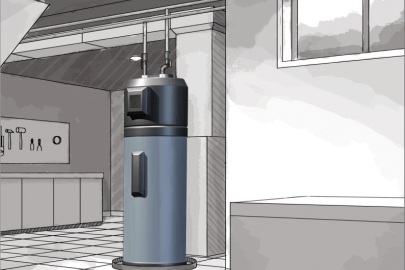They are making several great observations on the subject of Tips on Maintaining a Water Heater as a whole in this post beneath.

Warm water is essential for day-to-day convenience, whether it's for a revitalizing shower or cleaning recipes. To ensure your hot water system runs efficiently and lasts longer, routine upkeep is vital. This article provides useful suggestions and insights on just how to maintain your home's hot water system to prevent interruptions and expensive fixings.
Intro
Keeping your home's hot water system might seem difficult, but with a few simple steps, you can ensure it operates smoothly for years to come. This guide covers everything from recognizing your warm water system to do it yourself upkeep ideas and understanding when to employ expert assistance.
Value of Preserving Your Hot Water System
Routine maintenance not only extends the lifespan of your hot water system but additionally guarantees it operates efficiently. Disregarding upkeep can result in decreased performance, greater energy costs, and also premature failing of the system.
Indicators Your Hot Water System Demands Maintenance
Knowing when your warm water system needs attention can protect against major concerns. Watch out for indicators such as irregular water temperature, weird sounds from the heater, or corroded water.
Comprehending Your Hot Water System
Prior to diving into upkeep tasks, it's helpful to recognize the standard elements of your hot water system. Normally, this includes the hot water heater itself, pipes, anode poles, and temperature controls.
Monthly Maintenance Tasks
Routine monthly checks can aid catch small issues prior to they escalate.
Purging the Water Heater
Flushing your hot water heater gets rid of sediment build-up, enhancing performance and extending its life.
Monitoring and Replacing Anode Rods
Anode poles prevent corrosion inside the storage tank. Checking and changing them when broken is crucial.
Checking and Changing Temperature Settings
Changing the temperature level settings guarantees optimal performance and safety and security.
Do It Yourself Tips for Maintenance
You can carry out numerous maintenance jobs on your own to keep your warm water system in leading condition.
Looking for Leaks
Consistently check pipelines and connections for leakages, as these can lead to water damage and greater costs.
Evaluating Stress Alleviation Valves
Testing the pressure relief valve guarantees it operates correctly and avoids extreme stress buildup.
Protecting Pipelines
Shielding hot water pipes minimizes warmth loss and can conserve energy.
When to Call an Expert
While do it yourself upkeep is beneficial, some issues require expert experience.
Complex Issues Needing Expert Aid
Instances include major leaks, electrical problems, or if your water heater is regularly underperforming.
Routine Specialist Upkeep Advantages
Expert upkeep can consist of detailed inspections, tune-ups, and ensuring conformity with safety standards.
Verdict
Normal upkeep of your home's warm water system is essential for efficiency, longevity, and price financial savings. By adhering to these tips and knowing when to look for specialist aid, you can make certain a trusted supply of warm water without unanticipated disturbances.
Water Heater Maintenance Tips
Test the TPR Valve
Shut off the power and the cold-water supply valve. Place a bucket under the pipe connected to the temperature-pressure-release (TPR) valve on the top or side of the tank. (This valve opens if the tank pressure gets too high.) Lift the valve’s tab to let some water out, then let go. If water keeps flowing, drain the tank partway, unscrew the old valve with a pipe wrench, and install a new one. Check the Anode Rod
Put a hose to the tank’s drain cock and let out a few gallons of water. Now fit a 1 1/16-inch socket onto the rod’s hex head on top of the heater (or under its top plate) and unscrew the rod. If it’s less than ½ inch thick or coated with calcium, buy a new one, wrap its threads with Teflon tape, put it back in the tank, and tighten securely. Use this segmented rod if headroom above the tank is limited. Drain the Tank and Wash Out Sediment
Drain the remaining water in the tank into the bucket, then stir up the sediment on the tank’s bottom by briefly opening the cold-water supply valve. Drain and repeat until clean water comes out of the hose. Close the drain cock, refill the tank, and turn its power back on. Adjust the Temperature
Find the temperature dial on the side of the tank and unscrew its cover. Adjust the dial to 120 degrees using a flathead screwdriver. For every 10 degrees the temperature is lowered, you can expect to save up to 5 percent in energy costs. Turn the water heater off or the thermostat down to its lowest setting if you plan to be away from home for more than three days. Insulate the Pipes
Buy some self-sticking 3/8-inch-thick foam pipe insulation that matches the pipes’ diameter. Slide the foam over the hot-and cold-water pipes as far as you can reach. Insulating the cold-water pipe prevents condensation in summer. Peel the tape and squeeze the insulation closed. If the pipe is 6 inches or less from the flue, cover it with 1-inch-thick unfaced fiberglass pipe wrap. https://www.thisoldhouse.com/plumbing/21016402/how-to-maintain-a-water-heater

Hopefully you enjoyed our topic about Tips For Maintaining Your Hot Water Heater. Thanks a lot for taking time to read our article post. Sharing is caring. Helping others is fun. I value reading our article about Tips For Maintaining Your Hot Water Heater.
Book Appointment Now